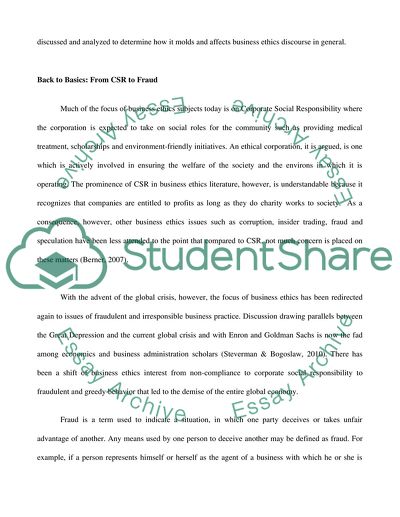Cite this document
(Business Ethics and the Global Crisis Coursework, n.d.)
Business Ethics and the Global Crisis Coursework. Retrieved from https://studentshare.org/social-science/1737224-does-the-recent-financial-and-economic-crisis-reveal-anything-about-the-importance-of-business-ethics-or-about-what-the-academic-study-of-business-ethics-might-teach-corporations
Business Ethics and the Global Crisis Coursework. Retrieved from https://studentshare.org/social-science/1737224-does-the-recent-financial-and-economic-crisis-reveal-anything-about-the-importance-of-business-ethics-or-about-what-the-academic-study-of-business-ethics-might-teach-corporations
(Business Ethics and the Global Crisis Coursework)
Business Ethics and the Global Crisis Coursework. https://studentshare.org/social-science/1737224-does-the-recent-financial-and-economic-crisis-reveal-anything-about-the-importance-of-business-ethics-or-about-what-the-academic-study-of-business-ethics-might-teach-corporations.
Business Ethics and the Global Crisis Coursework. https://studentshare.org/social-science/1737224-does-the-recent-financial-and-economic-crisis-reveal-anything-about-the-importance-of-business-ethics-or-about-what-the-academic-study-of-business-ethics-might-teach-corporations.
“Business Ethics and the Global Crisis Coursework”, n.d. https://studentshare.org/social-science/1737224-does-the-recent-financial-and-economic-crisis-reveal-anything-about-the-importance-of-business-ethics-or-about-what-the-academic-study-of-business-ethics-might-teach-corporations.


